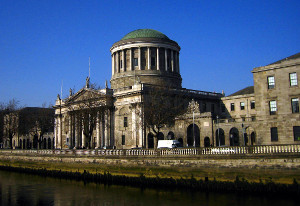High Court: Application for leave to execute 11-year-old judgment against debtor refused

The High Court has refused an application by Cabot Financial Ireland (Limited) to execute a judgment obtained in 2010 against a debtor. In so ruling, the court was required to consider the provisions of Order 42 Rule 24 RSC which relates to the execution of judgments that are outstanding for more than six years.

About this case:
- Citation:[2022] IEHC 92
- Judgment:
- Court:High Court
- Judge:Mr Justice Denis McDonald
The court determined that Cabot had “wholly failed to provide a reason that explains the long period of inactivity” in seeking leave to execute the 2010 judgment. The court determined inter alia that the bankruptcy of the debtor was not a good justification for the delay in bringing the application for leave to execute.
Background
In November 2010, ACC Bank plc obtained a judgment against the defendant in the sum of €271,000. In March 2012, the judgment was registered as a judgment mortgage over the defendant’s interest in a property in County Mayo. In January 2013, a further judgment mortgage was registered against another of the defendant’s properties. There was a prior charge in favour of First Active plc in relation to this second property, which was also the defendant’s family home. The judgment was also registered against a third property in January 2013.
In April 2011, a receiver was appointed over the first property which was sold in February 2015 for €50,000. Following costs and expenses being deducted, the net return to ACC from the sale was only €7,653. The sales process was strongly criticised by the defendant.
The loan/judgment was transferred between different ACC entities between 2014 and 2016. The judgment was eventually transferred to Cabot in 2019 under deed of transfer.
In 2017, the defendant issued a petition for bankruptcy and was adjudicated bankrupt in October 2017. The properties owned by the defendant vested wit the Official Assignee in October 2018 and were only re-vested with the defendant in 2020.
In May 2021, Cabot issued an application seeking to be substituted as the plaintiff in the proceedings and therefore establish its entitlement to enforce the judgment. Further, an application was made by Cabot pursuant to Order 42 Rule 24 seeking leave to execute the 2010 judgment.
The court adjourned the application for leave to execute in order for further information to be placed before the court relating to the lapse in time between the 2010 judgment and execution. It was claimed that, by 2015, it was determined that the defendant was insolvent and that a judgment mortgage would only rank second in priority to First Active’s charge over the family home. Accordingly, alternative methods of enforcement were explored at that time, it was claimed.
Further, it was stated that ACC was stayed from executing the judgment due to the defendant’s bankruptcy. However, since the defendant was discharged from bankruptcy, Cabot asserted that it wished to issue well-charging proceedings in 2021 as the basis for seeking leave to execute.
The defendant appeared in person and argued that he did not believe that the judgment would be enforced given the passage of time. Further, he argued that there had been a failure to realise the actual value of his assets by the receiver.
High Court
Delivering judgment in the case, Mr Justice Denis McDonald began by stating the principles which applied to applications under Order 42 RSC. The court considered Smyth v. Tunney [2004] 1 I.R. 512, in which the Supreme Court held that Order 42 does not set out any express criteria on which an application for leave to execute may be granted or refused.
As such, a court has a discretion in Order 42 applications and, in order to engage such discretion, an applicant must provide some explanation for the lapse in time in executing the judgment. However, it was not necessary to show “unusual, exceptional or very special reasons for obtaining permission to execute out of time”, the court said.
The discretionary nature of applications under Order 42 was reiterated in KBC Bank plc v. Beades [2021] IECA 41. Further, it was noted that, even where good reason was identified for the delay, a court could consider any counterbalancing arguments of prejudice. Finally, it was noted that the onus was on the applicant to provide reasons or explanations for the delay and the jurisdiction of the court would not be engaged unless this was done (Irish Nationwide Building Society v. Heagney [2022] IEHC 12).
Applying the law to the facts, it was noted that Cabot’s focus in seeking execution was to enforce judgment against the defendant’s lands. In light of this, the evidence offered by Cabot “manifestly do not explain the lapse in time in enforcing the judgment”, the court said. There was no impediment at any point to Cabot (or ACC) enforcing against the defendant’s properties.
The court rejected the assertion that the bankruptcy proceedings stayed any enforcement. It was noted that a secured creditor was fully entitled to enforce its security against an individual, whether bankrupt or otherwise. This was a straightforward procedure, the court said. As such, the bankruptcy was not a plausible reason for the lapse in time in seeking to enforce.
Further, the charge held by First Active over the family home did not explain the delay, as Cabot could still have registered the mortgage and sought the sale of the property. Finally, the transmission of the interest in the judgment was not a sufficient reason which explained the delay. No evidence was provided as to why the sale of the loans/judgment between different entities prevented an application for leave to execute being made. As an assignee of the judgment debt, “Cabot cannot absolve itself of the inactivity” of its predecessors in title, the court held.
Conclusions
Accordingly, the court refused to grant the application.





